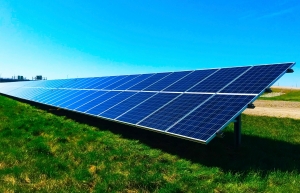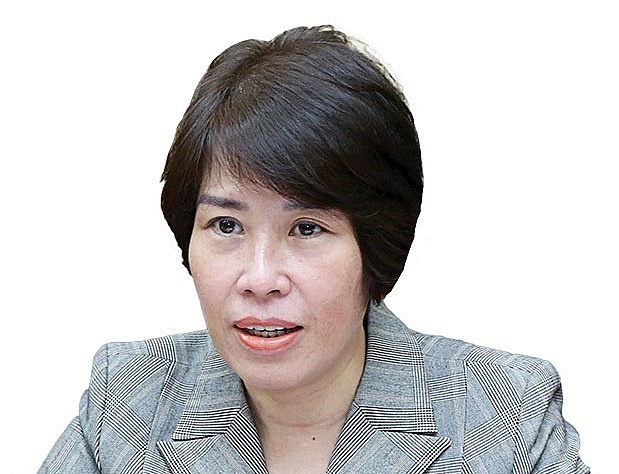Nascent green finance market in need of robust support
Minister of Finance Ho Duc Phoc discussed the plan at a net-zero event last week in Hanoi, adding that green financial and carbon markets “must be developed as priorities, with a focus on developing green financial instruments and sustainable finance, encouraging municipalities and businesses to issue green bonds, and attracting institutional and individual investors to green financial instruments”.
 |
| Nascent green finance market in need of robust support, illustration photo/ Source: freepik.com |
One of the greatest challenges in reaching net-zero commitments is the issue of resources. According to the World Bank, Vietnam will probably need to invest as much as $370 billion by 2040, equivalent to 6.8 per cent of GDP per year, when pursuing a sustainable development roadmap. In which, the decarbonisation journey to meet international commitments accounts for about 30 per cent of resource needs.
However, the public sector will only be able to meet about one-third of the required resources; while the green financial market is currently at an early stage of development, the resources mobilised through the green financial market are minimal compared to the demand.
Phoc added that the Ministry of Finance will continue to coordinate with the Ministry of Natural Resources and Environment (MoNRE) and relevant agencies to develop a list of green classifications according to Decree No.08/2022/ND-CP, dated January 2022, on the elaboration of several articles of the Law on Environmental Protection as a basis for issuers to choose projects to use capital from green bonds.
Under the decree, the MoNRE will be authorised to certify carbon credits and emission quotas eligible for trading on carbon trading platforms.
“The objective of carbon pricing and carbon market establishment is to mitigate greenhouse gases (GHGs), contribute to climate change response, and sustainable development goals. Through the carbon market, it is possible to enhance the reduction of GHGs at a low cost to businesses and society, promote the development of low-emission technologies, and contribute to improving the competitiveness of enterprises,” said Tang The Cuong, head of the Climate Change Department under the MoNRE.
In recent years, the carbon trading market has grown rapidly. In 2022, the global market for carbon credits hit a record $909 billion, up 14 per cent from a year ago, according to data from Refinitiv analysts. That demand is expected to continue to grow, in the context that most multinational enterprises and governments have set their own net-zero plans. To date, about 140 countries, including major emitters such as the US, China, and India have committed towards net-zero targets.
Many large corporations such as Carlsberg, Heineken, H&M, and Nike are also committed to using 100 per cent renewable energy on a global scale by either 2025 or 2030.
Cutting GHG emissions, switching to green energy sources, and absorbing GHGs in production activities, according to businesses, are three important steps to move towards green production.
For example, TH Group installed solar power systems on all farms, helping to reduce emissions of nearly 5,000 tonnes of CO2 a year; built a factory to process clean microbiological fertiliser of international standards; and invested in a modern wastewater treatment plant.
As a result, in 2022, carbon emissions at enterprises’ factories was reduced to 0.1kg of CO2 per product, down more than 30 per cent compared to 2021.
Meanwhile, To Viet Thang, vice president at Vietjet Air, said that many new standards that must be complied with in aviation in the green journey.
“If we do not stay ahead of the trends, it will be difficult for countries to introduce stricter regulations. This is not a game but a mission for businesses, and so we must actively and actively implement it,” said Thang.
| Nguyen Thi Bich Ngoc, Deputy Minister of Planning and Investment
The Ministry of Planning and Investment (MPI) is the unit in charge of the National Green Growth Strategy (NGGS). If we do not protect the environment and develop sustainably, all the economic benefits gained will be destroyed. It is quite hard to ensure net-zero and green growth during developing the economy, especially in developing countries like Vietnam. The goal needs a complete change in awareness, policymaking thinking, quantification of transformation, and innovation. The NGGS points out 10 strategic orientations covering most sectors and fields, and eight groups of solutions. The accompanying action plan has also been approved with 134 specific activities, emphasising some priorities, feasibilities, ready resources, benefits for various sides, and spillover ability, instead of only economically feasible options. Another highlight of green growth is balance and efficiency to change the economic structure and innovate the growth model. These are long-term benefits. The sooner we do it, the more effective and the lower the risk we gain. The MPI has already quantified and supplemented policies, and forecasted CO2 emissions in the optimal and efficient scenario. Thereby, state authorities should encourage enterprises to innovate and reduce GHGs during production and business. The goal of green growth is equality, inclusiveness, and leaving no-one behind. Implementing green growth will reduce diseases and benefit all subjects, especially disadvantaged groups. The MPI is also conducting research and developing a set of scientific criteria for national green classification, which is the basis for selecting ventures as well as quantifying and evaluating the progress of green growth. By 2022, 30 countries have already developed a set of green criteria. For Vietnam, the MPI is building a set of national green classification criteria that harmonise with many factors, including selecting green projects, mobilising domestic and international resources, and helping quantify green growth progress. Thereby, such initiatives can access green finance and new preferential policies. If the set of criteria is not inclusive and the same with international practices, it is hard to mobilise resources. In the coming time, we will issue the details in every area and project that are suitable for green growth orientations. These are the orientations and standards in line with international practices. On this basis, the ministries and branches will develop standards for each ministry. |
 | Green finance and technology solutions for net-zero emissions As climate change has become a serious international issue, many countries have taken action to reduce greenhouse gas emissions and achieve net-zero emissions by 2050. In Vietnam, the government has made a tremendous effort to combat climate change by ratifying the Paris Climate Agreement in 2016, pursuing the National Green Growth Strategy for 2021-2030, and implementing the Law on Environmental Protection which came into effect at the beginning of 2022. |
 | Financial institutions ready to provide greener agro-loans Financial institutions have a significant role in advancing agriculture’s net-zero agenda by channelling green finance, educating the market, and helping agricultural companies build a sustainability mindset. |
 | DBS Bank empowers Vietnam's green revolution In an exclusive interview with VIR’s Luu Huong, Yulanda Chung, head of Sustainability, Institutional Banking Group at DBS Bank discussed how the bank has embraced the opportunity in Vietnam to harness the power of banking to create a positive impact. |
What the stars mean:
★ Poor ★ ★ Promising ★★★ Good ★★★★ Very good ★★★★★ Exceptional
Related Contents
Latest News
More News
- Vietnam’s GDP forecast to grow by 9 per cent in 2026 (December 29, 2025 | 08:29)
- Women entrepreneurs are key to Vietnam’s economic growth (December 29, 2025 | 08:00)
- Vietnam's top 500 value-creating enterprises announced (December 27, 2025 | 08:00)
- The PAN Group shaping a better future with ESG strategy (December 26, 2025 | 09:00)
- Masan Consumer officially lists on HSX, marking the next phase of value creation (December 25, 2025 | 13:20)
- MCH to become the largest consumer stock on VN-Index (December 24, 2025 | 11:05)
- Oil and gas firms post strong 2025 results (December 22, 2025 | 17:42)
- SABECO wins multiple international beer awards (December 22, 2025 | 17:41)
- UOB sees Vietnam growth easing in fourth quarter (December 22, 2025 | 17:39)
- First members of Danang International Finance Centre revealed (December 22, 2025 | 17:39)


 Tag:
Tag:




















 Mobile Version
Mobile Version